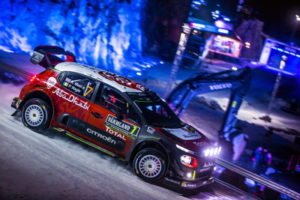 There are many different forms of motor racing that take place in a competitive form, ranging from the likes of stock car racing through to Formula 1. Add in the world of motorcycle racing and the number of options available go up exponentially. Arguably one of the most exciting forms of racing is Rallying, which involves the use of production cars that have been modified or else road-legal cars that have been specially built.
There are many different forms of motor racing that take place in a competitive form, ranging from the likes of stock car racing through to Formula 1. Add in the world of motorcycle racing and the number of options available go up exponentially. Arguably one of the most exciting forms of racing is Rallying, which involves the use of production cars that have been modified or else road-legal cars that have been specially built.
The format that rally races take can differ, though they tend not to be point-to-point races like the F1 and opt for more of a stage format that you’d be more used to seeing in something like the Tour de France. Rallying is very much an all-action affair, with victory sometimes coming about courtesy of the speed of the drivers within the stages and sometimes because the drivers have hit an ideal journey time during the race. What you imagine when you hear about car races that see the vehicles skidding around a corner, perhaps with mud flying through the air, is rally driving.
Best Bookie For Pool Betting
Unibet

Unibet are one of the kings of motor sport betting and a go to bookie for Rallying as well as F1, speedway, nascar and supercars. The site provides ante-post outright markets well in advance of others and closer to events and in-play their depth is unbeatable.
Most lines are of course focused on the world rally championship but you can find rally and rally-cross events periodically, including Dakar, European events, British events and American Rallying.
The betting site also have a range of deals that can be used across many sports, including rallying, that can be used to enhance odds or add protection to your wagers.
How To Bet Rally Racing
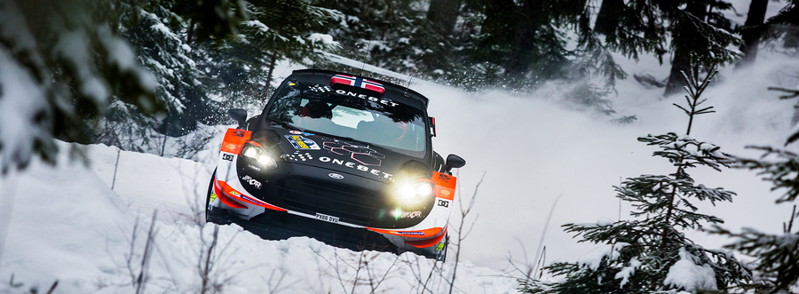
When it comes to betting on rallying, you’re presented with a number of options. The most obvious is the ability to bet on the overall winner of the various championships, both for the driver and the for the Constructors’ championship.
You can also bet on individual stages of the various championships, if you can find a bookmaker that will offer you those markets. If you do indeed find a bookies that is willing to look at those markets then you will likely find that you can bet on the likes of timings and penalties for the various drivers.
In the UK, the majority of bookmakers focus pretty exclusively on the simply ante-post bets on the various winners of the championships, rather than more in-depth markets.
The History of Rallying
First Race Paris to Bordeaux
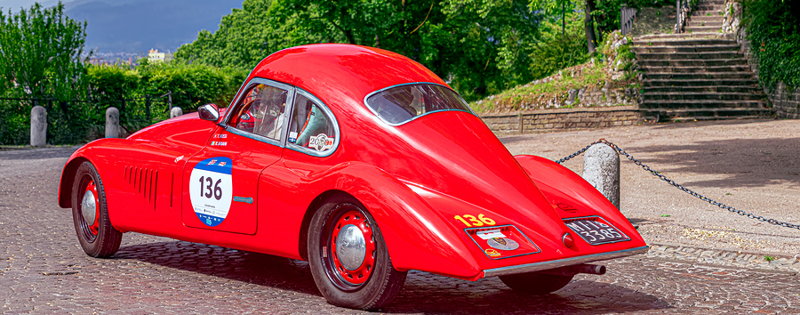
The exact origins of rally as a type of sport isn’t clear, but it’s likely that it can be traced back to the Paris–Rouen Horseless Carriage Competition that occurred in 1894. Sponsored by Le Petit Journal, it gained a large amount of public interest and most of the leading manufacturers entered it as a result.
It proved to be popular enough to mean that a number of city-to-city races around France and the rest of Europe began to take place in the years that followed, introducing some of the factors that would later be standard for rally races. These including the likes of individual start times, long distances and the use of different types of surfaces.
A race from Paris to Bordeaux and then back to Paris was the first to fit into this category, showing the lunacy of the judgement of the winner when Paul Koechlin in a Peugeot won despite arriving 11 hours later back to Paris than Émile Levassor did in their in a Panhard et Levassor. A race from Bordeaux to Agen and then back again was organised by the Automobile Club de France towards the end of 1895.
Held in ten stages, the race is generally considered to be the first rally in the modern sense of the term. Other races followed suit, including one from Paris to Madrid that resulted in several deaths and caused the French authorities to ban similar style of events.
Rallying Begins To Develop
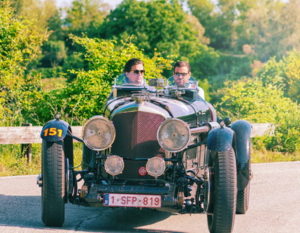 It resulted in similar long-distance races taking place throughout Europe. What was known as a ‘reliability race’ took place from Turin to Asti and then back in Italy in 1895, for example, whilst the Tour de France for cars occurred in 1899 and ran for 18 yeas from 1906 until 1951.
It resulted in similar long-distance races taking place throughout Europe. What was known as a ‘reliability race’ took place from Turin to Asti and then back in Italy in 1895, for example, whilst the Tour de France for cars occurred in 1899 and ran for 18 yeas from 1906 until 1951.
Britain wasn’t immune from the burgeoning world of automobile racing, with the Automobile Club of Great Britain organising a 15-day event that occurred between the country’s major cities in 1900. It involved 13 stages that varied in their length from 43 miles to 123 miles and the cars had to obey the country’s maximum speed limit of 12 miles per hour. It was successful enough to mean that a similar race was organised in Glasgow in 1901.
The first motoring event to take place and actively use the term ‘rally’ was the Monte Carlo Rally, which occurred in January of 1911. Organised by the Automobile Club de Monaco at the behest of the then Prince of Monaco, the competition saw 23 cars begin their journeys from 11 different locations before converging on Monte Carlo.
Unlike modern rally races, the winner was determined according to such random things as the comfort of the journey for a passenger, the state of the car when it arrived in the principality and the elegance of the car, with Henri Rougier winning in a Turcat-Méry 25 Hp.
The Interwar & Post-Second World War Eras
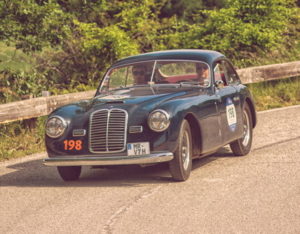 Unsurprisingly, rallying took something of a backseat during the First World War and it was only brought back to the fore in 1924 when the Monte Carlo Rally resumed after having been suspended during the hostilities.
Unsurprisingly, rallying took something of a backseat during the First World War and it was only brought back to the fore in 1924 when the Monte Carlo Rally resumed after having been suspended during the hostilities.
The 1920s saw alpine racing become something of the rage, with major events taking place in Austria, Germany and Switzerland amongst other European countries. France followed suit, launching the Rallye des Alpes Françaises in 1932, with the event becoming known as the Coupe des Alpes and running until 1971 as one of the sport’s most prestigious events.
Rallying was once again suspended during the Second World War, but when hostilities ended rallying got back underway. Indeed, the 1950s are considered by many to be the sport’s golden age, specifically with reference to the world of long-distance racing. New races were quickly established, with the likes of the Netherlands’ Tulip Rally and Sweden’s Rally to the Midnight Sun joining the Liège in Belgium and the Monte Carlo Rally as being events that serious drivers just couldn’t miss out on.
The RAC Rally returned in 1951, but it was unpopular with foreign drivers on account of the fact that it leant heavily on map reading and tests of drivers’ manoeuvrability.
Rallying Outside Of Europe
Given rallying’s dependence on roads and course locations that challenged drivers and the co-drivers, it’s no surprise that the sport began to gain prominence in countries were demanding terrain were all they really offered.
The Gran Premio del Norte was the first example of such an event, asking drivers to travel to Lima from Buenos Aires and then back again, with the race divided up into daily legs. It took place for the first time in 1940 and then was run again in 1947, before the following year saw an even more ambitious event planned that asked drivers to go from Buenos Aires to Caracas in Venezuela.
Things were taken to an even greater extreme in 1950 when the Carrera Panamericana saw competitors travel just shy of 2,000 miles across Mexico. That continued until 1954 but eventually had to stop because of the cost of running it.
The only race sanctioned by the FIA in North America occurred in the 1960s when the Shell 4000 Rally took place in Canada. It was one of the longest rallies ever attempted, taking place over more than 4,000 miles. It encouraged other countries to try to come up with races that were just as gruelling, which gave birth to the world of intercontinental rallies. Perhaps the most extreme example of this came in the form of the London to Sydney marathon that took place in 1968.
Modern Day Rallying
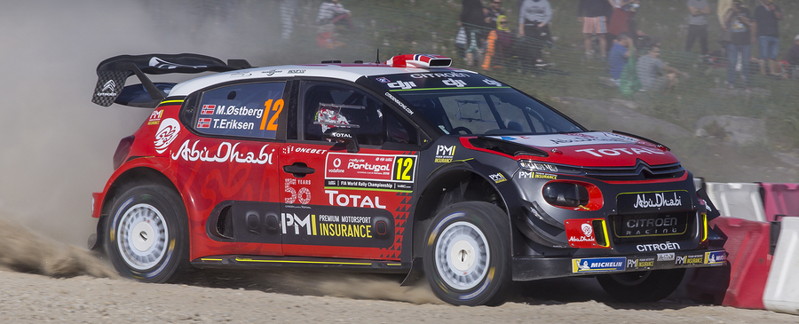
The modern era of rallying came into being predominantly because of the success of special stages, which allowed for smaller events to take place across Europe in the likes of France, Britain and Scandinavia.
That’s not to suggest that the longer-distance events didn’t carry on, of course. The Mexican 1,000 race was invented in 1967 and was open to both car and motorbike riders, for example. Yet the smaller events became the most popular with both competitors and audiences alike, if for no other reason than people could actually watch rallies take place without having to travel from England to Australia to watch the winners cross the line!
The modern day rally doesn’t take place on a circuit, which is what the likes of F1 racing does, but instead runs from point-to-point as the original races tended to do. The races involve the various drivers leaving a starting point at different times to each other, arriving at their destination within allotted times and putting themselves in the position to win the race accordingly.
The nature of various events that take place in modern day rallying are largely determined according to the relative cost and the ability to organise things appropriately. Safety concerns have also been a part of the development of the sport, with nighttime rallying all but eliminated and amateur drivers virtually removed from the sport because of the rising costs of creating and maintaining a car that is suitable for the differing course types.
How Rally Racing Works
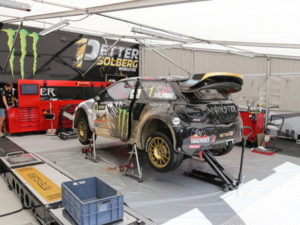 Now that we know a little bit more about the history of the sport of rallying it’s worth having a look at how the events themselves work. The first thing to realise is that there are two main forms of rally: road rallies and stage rallies. The latter have been how the professional version of the sport has operated since the 1960s.
Now that we know a little bit more about the history of the sport of rallying it’s worth having a look at how the events themselves work. The first thing to realise is that there are two main forms of rally: road rallies and stage rallies. The latter have been how the professional version of the sport has operated since the 1960s.
In short, the competitors drive from one point to another on roads that have been closed to the public, with timings taken for the speed with which they make it to their destination. Drivers and their co-drivers are allowed to reconnaissance the course ahead of the race in order to make their own pace notes about how it drives and what they need to bear in mind in terms of what lies ahead.
The Courses and Tracks
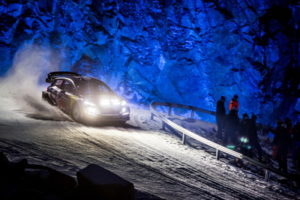 Rally courses can be based on any type of road condition, with asphalt, snow, ice and gravel all being amongst the most common to be picked depending on the location that the rally tournament is taking place in. Indeed, where exactly the rally is occurring will dictate whether there is just one surface type used during the competition or several that need to be negotiated by the competitors.
Rally courses can be based on any type of road condition, with asphalt, snow, ice and gravel all being amongst the most common to be picked depending on the location that the rally tournament is taking place in. Indeed, where exactly the rally is occurring will dictate whether there is just one surface type used during the competition or several that need to be negotiated by the competitors.
Rally courses generally tend to be made up of stages that are around 30 miles in length, depending on the location used. These stages are timed to see which competitors have handled them the best, with some untimed stages also in play to move from one section of the course to another. Because of this, rally cars have to be able to drive on normal roads legally, making them different from the likes of F1 cars.
The Races
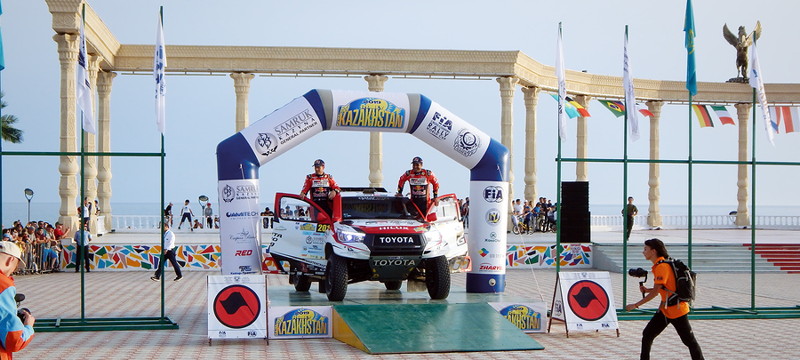
Some races contain what are known as ‘super special stages’ and the events themselves can last for however long the race organisers wish. Usually this is no more than a weekend, but it can be longer. At the end of the allotted period that the race is due to take place during, the winner is declared according to the amount of time they’ve taken to complete the various stages that are officially in play.
During a race drivers will employ any number of driving techniques, from handbrake turns to hill jumping, via Scandinavian flicks and heel-and-toe shifting. The drivers will employ whatever methods they need to in order to negotiate the courses as quickly as they can. It is a skill that not all drivers can master, which is why the sport’s most famous names, such as Colin McRae, can even have computer games made in their honour.
The Cars
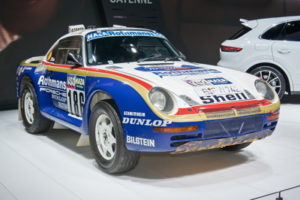 Rally cars have always been designed to be suitable to drive on public roads in order to allow them to move from stage-to-stage without breaking the laws of the local country that the rallies are taking place in and without the need for a major transportation system. They have pretty much always been variants on well-known and much-loved cars that the public can drive, such as the Mini Cooper and the Ford Cortina.
Rally cars have always been designed to be suitable to drive on public roads in order to allow them to move from stage-to-stage without breaking the laws of the local country that the rallies are taking place in and without the need for a major transportation system. They have pretty much always been variants on well-known and much-loved cars that the public can drive, such as the Mini Cooper and the Ford Cortina.
Rallying has also caused the development of cars that were specially aimed at rally races but then became popular with the public. The most obvious example of this was the Audi Quattro, which had been designed to take on rally racing but entered the public domain when demand made it impossible for the German car manufacturer to ignore the calls to do so.
The rules surrounding the manufacture of rally cars changed in 1987, with FISA altering them after several spectators had been killed by adjusted cars during the Rallye de Portugal. From that point onwards only Group A cars that were close to the production models have been used, meaning that rally driving has been accessible for amateurs and those in the grassroots of the sport as well as professionals.
The Major Rally Tournaments
| Event | Location | Information |
|---|---|---|
| World Rally Championship | Global | Inaugurated in 1973, the World Rally Championship boasts three support championships in the form of the Junior World Rally Championship, the World Rally Championship 2 and the World Rally Championship 3 |
| European Rally Championship | Europe | The European equivalent to the World Rally Championship has been in play since 1953 and is organised by the Fédération Internationale de l’Automobile on an annual basis |
| British Rally Championship | United Kingdom | First taking place in 1958, the tournament gained Motor Sports Association licensing in 1999 and is considered to be the country’s foremost rally championship |
| Rally America | United States of America | One of the youngest rally championships of the major nations, this has only been a competition since 2005 |
| Dakar Rally | Saudi Arabia | Inaugurated in 1979, this is open to both amateurs and professionals and falls into the category of cross-country rallying, with both cars and bikes allowed to enter |
Rallying is like any other competitive sport insomuch as there are countless competitions and tournaments depending on how far you want to look and the level you wish to talk about. Obviously we’re mainly interested in the professional level of things and therefore are mainly looking at the rallies that fit into that bracket.
There are different types of rallies, with road rallies being the original type that popularised the sport. Depending on the country the event takes place in, the rally type will be different. Above we’ve taken a look at the major events within the sport.
